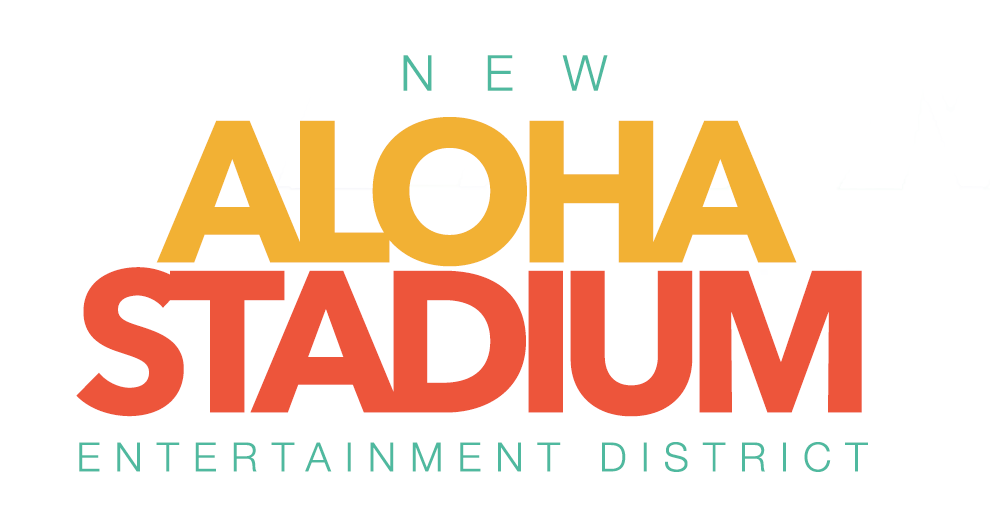Honolulu Star-Advertiser
Hawaii News
By Andrew Gomes
April 29, 2021
Hawaii lawmakers have fixed a kink in a state effort to redevelop Aloha Stadium and surrounding land in partnership with the private sector.
House and Senate members voted near unanimously Tuesday to pass a bill that shifts command of the more than $1 billion plan to a state agency managing the stadium from an agency driving redevelopment in Kakaako and Kalaeloa.
The measure was crafted to correct a legislative blunder last year that delayed the state seeking proposals from private developers for what is dubbed the New Aloha Stadium Entertainment District, where housing, retail, restaurants, hotel rooms and other commercial uses are envisioned to rise around a new stadium on 98 acres in Halawa.
The state Department of Accounting and General Services, which is involved in the NASED plan, helped draft the bill and said Monday that it is very pleased with the final version, which was amended five times in committees.
Under House Bill 1348, the Stadium Authority, which is administratively attached to DAGS, will take control of NASED.
This reverses a decision lawmakers made in 2019 to assign the Hawaii Community Development Authority the lead role in soliciting and picking a detailed plan from among private developer proposals.
The Stadium Authority under HB 1348 still would be able to use a special power under HCDA’s statute for seeking and selecting private real estate development proposals based on criteria that include value and excellence as opposed to procurement contracts for low-bid construction or high-bid land use.
“One of (the bill’s) features is it will allow the state to undertake a flexible procurement process, which is underpinned by a demonstration of the best overall value to the state,” DAGS said in a statement. “We will not be confined to selecting the lowest bid value or highest auction value.”
Lawmakers tried to make the lead agency change last year in a bill, but passage was blocked over concerns that language would have allowed HCDA to offer state land in its jurisdiction for use under 99-year leases, up from 65 years.
The problem was described as a “monumental error” by DAGS administrator Curt Otaguro and as a “collective fumble on the 1-yard line” by Sen. Glenn Wakai (D, Pearl Harbor-Kalihi).
Some lawmakers urged approval of last year’s bill based on a pledge that the offending language would be easily corrected this year and that no 99-year HCDA land leases would be granted in the interim. But the pledges fell short.
As a result, goals were missed to issue a request for proposals last year in order to pick a development team that could have a new stadium open in 2023.
Now, DAGS anticipates seeking proposals in July from three previously qualified bidders to replace the 50,000-seat Aloha Stadium with a new 35,000-seat facility on 20 acres under a process governed by the Stadium Authority.
Under this arrangement, a developer would build the new stadium and maintain it for 30 to 40 years for an arranged price while the Stadium Authority manages the facility.
Surrounding commercial and residential development on 78 acres would be a separate deal in which prospective developers would be asked to submit credentials in July, followed later by a request for proposals open to a shortlist of top-qualified contenders.
This “real estate” portion of NASED is expected to be developed over two decades or so, with revenue from a land lease helping offset taxpayer expense for a new stadium.
Lawmakers in 2019 appropriated up to $350 million in bonds and general funds that can be used for NASED.
Chris Kinimaka, DAGS public works administrator, said Thursday on PBS Hawaii “Insights” show that the roughly estimated stadium replacement cost is now $423 million, up from the 2017 estimate of $350 million.
Under HB 1348, the Stadium Authority would be given a special fund to hold financial contributions from the state along with revenue from stadium operations.
The bill also would give the Stadium Authority ownership of the NASED site and increase its board to 11 members from nine.
The two new positions would be filled by residents of communities around the NASED site. The president of the University of Hawaii or their designate would maintain their current nonvoting board position.
An earlier version of the bill had sought to make the UH president a voting member because UH football is a major user of the stadium.
In December, the Stadium Authority informed UH that using the stadium won’t be viable until a replacement is built, partly because stadium revenue plummeted due to COVID-19 and can’t support expenses.
This decision forced a scramble by the university to pursue improving its Clarence T.C. Ching Athletic Complex practice facility on campus in Manoa to accommodate home football games for at least three years starting with a Sept. 4 season opener against Portland State.
UH, which has used Aloha Stadium as its home field since 1975 when the stadium opened, started a fundraising campaign earlier this month to help pay for the work recently estimated to cost around $8 million, up from an initial $6 million estimate.
READ FULL ARTICLE HERE.

